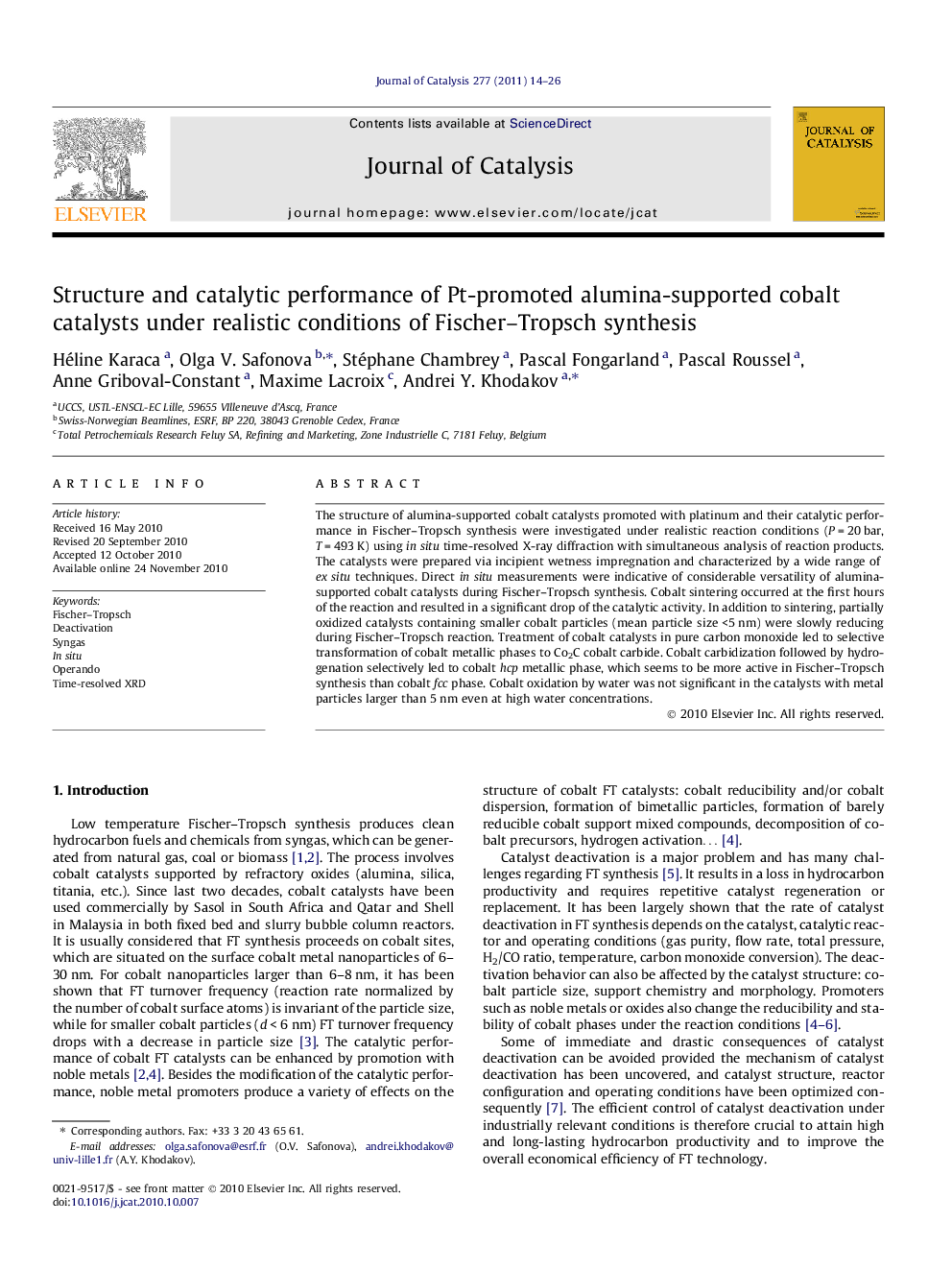| Article ID | Journal | Published Year | Pages | File Type |
|---|---|---|---|---|
| 61835 | Journal of Catalysis | 2011 | 13 Pages |
The structure of alumina-supported cobalt catalysts promoted with platinum and their catalytic performance in Fischer–Tropsch synthesis were investigated under realistic reaction conditions (P = 20 bar, T = 493 K) using in situ time-resolved X-ray diffraction with simultaneous analysis of reaction products. The catalysts were prepared via incipient wetness impregnation and characterized by a wide range of ex situ techniques. Direct in situ measurements were indicative of considerable versatility of alumina-supported cobalt catalysts during Fischer–Tropsch synthesis. Cobalt sintering occurred at the first hours of the reaction and resulted in a significant drop of the catalytic activity. In addition to sintering, partially oxidized catalysts containing smaller cobalt particles (mean particle size <5 nm) were slowly reducing during Fischer–Tropsch reaction. Treatment of cobalt catalysts in pure carbon monoxide led to selective transformation of cobalt metallic phases to Co2C cobalt carbide. Cobalt carbidization followed by hydrogenation selectively led to cobalt hcp metallic phase, which seems to be more active in Fischer–Tropsch synthesis than cobalt fcc phase. Cobalt oxidation by water was not significant in the catalysts with metal particles larger than 5 nm even at high water concentrations.
Graphical abstractDirect characterization using in situ synchrotron-based XRD combined with simultaneous analysis of the reaction products by on-line gas-chromatography was indicative of considerable versatility of alumina-supported cobalt catalysts promoted with platinum under realistic conditions of Fischer–Tropsch synthesis.Figure optionsDownload full-size imageDownload high-quality image (96 K)Download as PowerPoint slide
